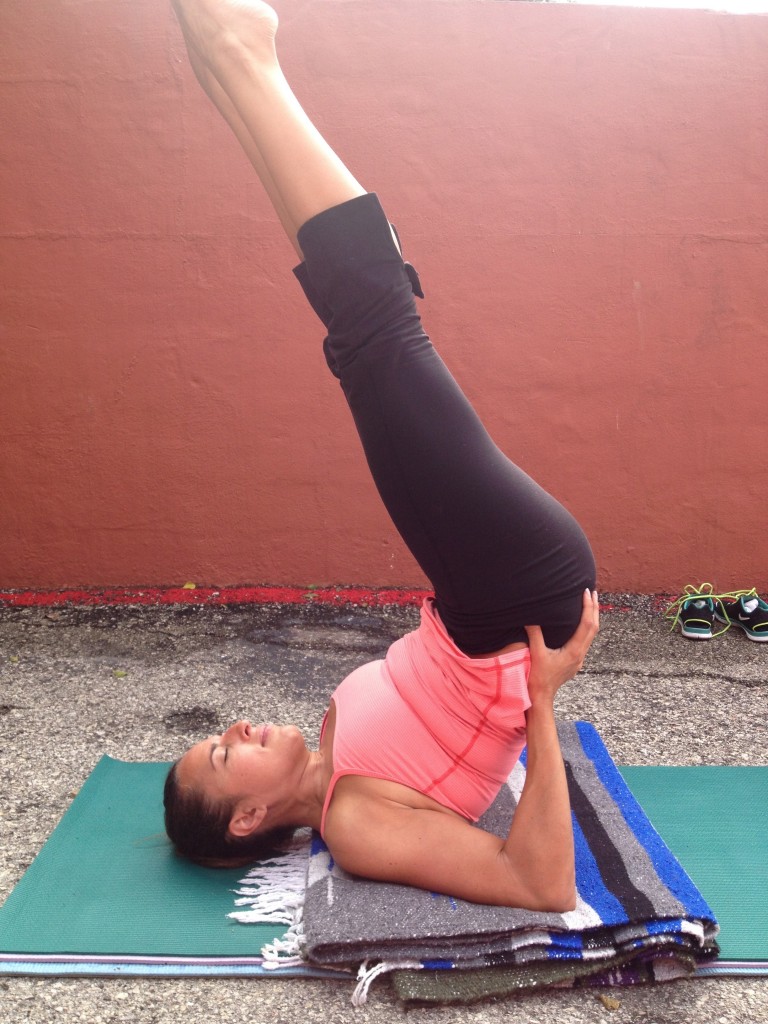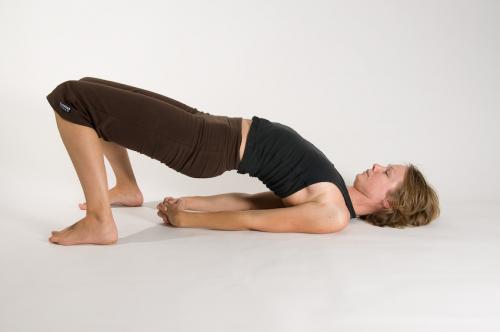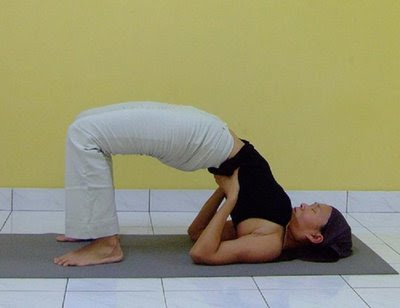Getting Started – Check Your Props
Some bolsters that are old or in yoga studios that have had people sitting on the numerous times for years no longer offer the support needed to have a successful shoulderstand (one that has no pain or discomfort). So a skillful teacher that knows how to fold blankets or use appropriate bolsters is needed.
How long shoulderstand should be held? If you have been a wise student and you can do a five minute bridge with shoulder stand arms you are well on your way.
Start with a supported chair shoulderstand for three minutes, working up to five minutes every other day for several weeks. No pain, no discomfort immediately after but most importantly no pain or discomfort hours later or even the next day.
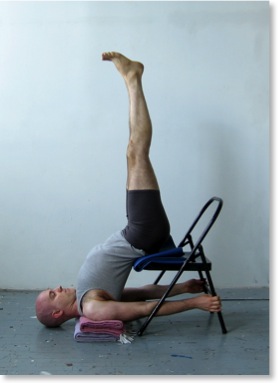
Even with a chair a skillful teacher is needed. His head on the hard floor does not create ease in the posture. You need open shoulders, open spine, active strong legs, lengthened neck, and proper support under the shoulders.
I have had students tell me they were fine then the next day they were in pain … that is when I get the call for help. Some teachers have students do a 3, 5, 7 or even 12-minute supported shoulderstand when the student has either never done a shoulderstand before or they have only done it in this teachers class every now and then.
I don’t understand this. If I asked a student to do a Warrior 2 pose supported by using a wall for three minutes or more they couldn’t do it, and they stand and use their legs all the time. Why would a teacher think a student could do these hold times in an inversion?
Danger! Injury Ahead!
This is a shoulder standish thing using blankets, either learned on own or from an unskillful teacher. This is not the yoga posture Shoulderstand. It’s an injury waiting to happen.
You’ve Reached Your Goal!
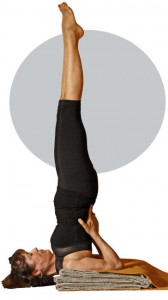
This shoulderstand is a beautiful version of the posture. Start with only short holds – what’s your hurry? Work your way into longer holds or variations from a skillful teacher. Enjoy the therapeutic benefits of this magical posture.
Don’t let a teacher force you into this posture before you and your physical body are really ready. Enjoy life, enjoy this path of yoga. See you on the mat!
